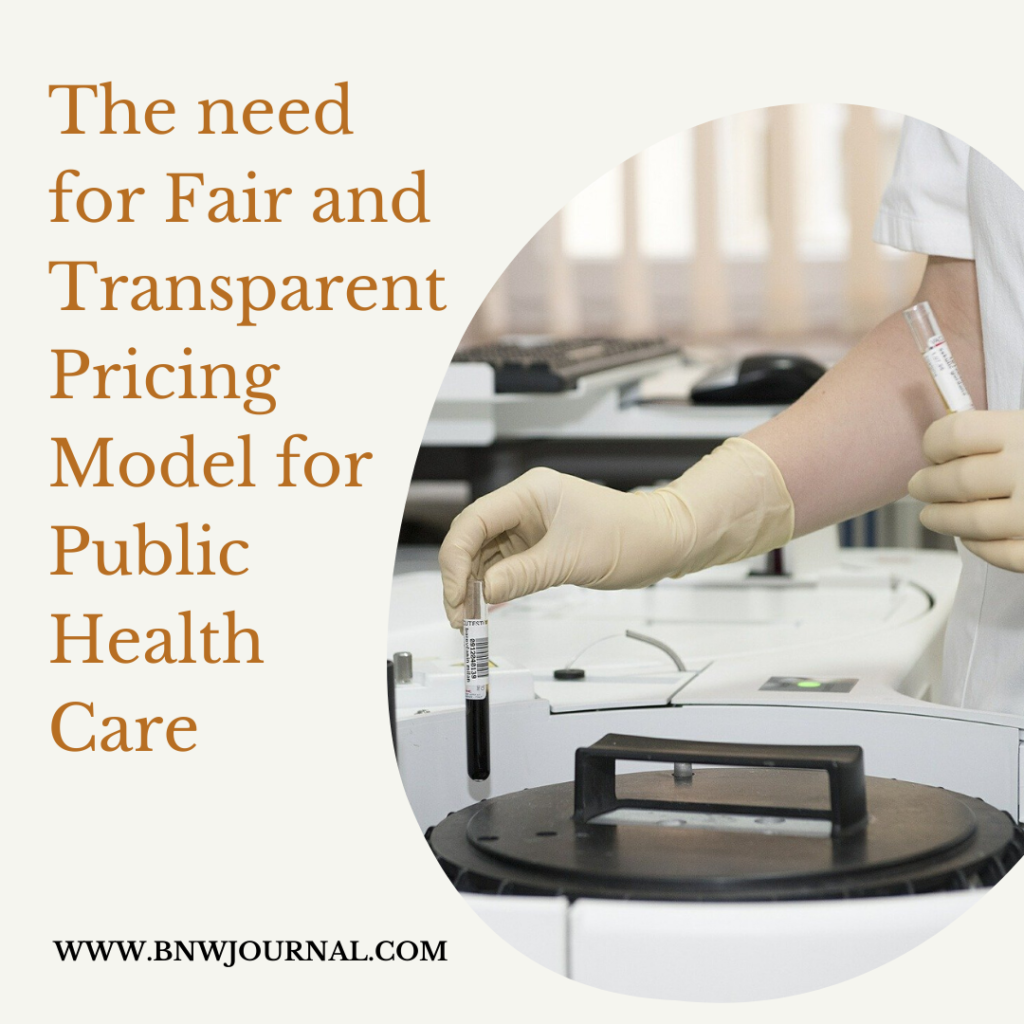![]()
The WHO’s definition of health as “a state of complete well being in terms of physical, mental and social determinants and not just the absence of disease or infirmity” was pronounced in the International Conference on Primary Health care, Alma Ata in terms of “Health For All” (Declaration of Alma Ata, 1978). India was a signatory to the very declaration and formulated the guidelines into public policies in line with this until the contemporary dynamics of neo-liberal policies changed its approach to public health.

In the course of this article, I would attempt to understand the present public health system by tracing its approach as a series of historic events and decisions that have changed the structure from preventive and promotional public health to a highly medicalized-curative individual health, intrinsically. Alongside, I would try to understand its approach in terms of – Health status and program impact, health system performance and health system strengthening. As, the National Health Policy (NHP), 2017 highlights these as the components of its goals and objectives to materialize Universal Access to Public Health in India (NHP, 2017).
Also, I would keep reflecting on how the NHP, 2017, has changed to account for comprehensive Primary Health Care by covering the theoretical aspects and at the same time highlight the ground reality of the policies.
The change in financial equations with the international bodies (IMF and World Bank) from aid based to loan based had given rise to the Structural Adjustment Policies (SAPs) of the 1990s which opened up public health to privatization. It brought in the medicalization of public health discarding social and economic values that shape primary health in reality (Qadeer, 2000).
This introduced cuts in public sector investments in health care, bringing in donor-driven priorities including user fees and techno-centric medical intervention and care by promoting the secondary and tertiary layers and resting them almost totally in the hands of private players.
As a result of this, the poorer section is the worst sufferer as they end up spending a major portion of their earning in healthcare, where, at the same time they have more chances of falling ill because of low immunity owing to improper nutrition and hygiene. Thus the Indian approach of preventive and promotional public health has been replaced by a highly techno-centric medical care based on curative treatment (ibid.).
However the literary objective is still to reach universal public health by expanding services to preventive, promotive, curative, palliative, and rehabilitative dimensions ensuring intersectoral coordination under the “Swasth Nagarik Abhiyan”. It considers promoting even gender neutrality as a health provider (NHP, 2017).
While targeted at 2% by 2025, the current percentage of allotment of funds for public health care out of GDP, in reality, is just around 1, against WHO’s recommendation of at least 5% which most of the developed countries abide by (the Scandinavian countries standing at 15%) (Mathur et. Al, 2015). Increased spending on healthcare would mean better healthcare outcomes of the total population along with more and efficient government interventional administration in healthcare including the private sector, where the public expenditure is highly exploitative.
This naturally means that healthcare in the system stands limited to only those sections that are successful in accruing the most out of the provisions against a fee (Gupta et. Al, 2011); the majority which at the same time is marginal has to debar themselves from seeking medical help unless it is pushed to the extremes at which point they tend to do out of pocket expenditures which stick them to the vicious debt traps or destruction of long saved asset reserves. Sodhi et. Al (2014) reported that the total Out Of Pocket (OOP) spending stood at 71% of the total healthcare expenditure in India.
The lack of proper surveillance and monitoring into the functioning of publicly funded institutions results in a slack system. And it continually pushes the middle class to opt-out and see privately provided healthcare, which subsequently affects public fundraising for healthcare expenditure through general taxation (ibid. et al).
With the ‘Millennium Development Goals’ losing momentum to provide its initial goals of health, the UN General Assembly came up unanimously to adopt a resolution making “Universal Health Coverage’ an essential element of International Development to which India forwarded its mandate to be achieved by 2030 (Sharma, 2018). It recognizes that the families should be able to avail health services from health promotion to prevention, treatment, rehabilitation, and palliative and curative care without financial hardships taking a toll on their already downtrodden economic status.
However it was again revised and revived under the Sustainable Development Goals (target 3.8) to add financial protection along with quality essential service coverage. Hence with the realization of ‘one size does not fit all’, India exercising the given freedom, devised its policy to address these concerns from time to time.
It is understood to follow from this series of events that the Indian govt. recommended Universal Health coverage. Basically it is by merging the central and state government schemes, to ensure quality and accessibility to health for all. It came in the policy form of the “National Health Protection Scheme (NHPS)” which announce to cover roughly 100 million poor and vulnerable families; marking the “Ayushman Bharat Pradhan Mantri Jan Aarogya Yojana (AB-PMJAY)” to become the world’s largest state-funded insurance scheme (ibid. ).
However due to a dearth of public hospitals with quality service; the health insurance schemes in India impanel hospitals from both the sectors, majorly private. It brings out to make the latter the preferred mode for delivery of services (Sodhi and Rabbani, 2014). This has eventually change the approach to healthcare from the impetus in strengthening universal access to public health. Through Primary Health Care to target management of beneficiaries; whose affordability constraint that previously hindered service is now taken care of by the private sector at the expense of the taxation policies of the government.
The monitoring and functioning though has been reported to improve and coverage base expand under the AB-PMJAY, 2018 catering to the bottom 40% poor and vulnerable section. However (Sharma, 2018) reported only 20% enrollment out of the total population covered under the program.
Another important aspect of the current approach to universal public health, according to the same study, comes out from the fact that the NHPS focuses primarily on the secondary and tertiary medical services ignoring the out-patient services which in reality, account for the largest percentage of OOP expenditure.
The scope of disease coverage has been expand to include various noncommunicable. Esp. lifestyle diseases covered under the National Urban Health Mission) and mental health diseases. Promoting healthy living by harnessing AYUSH systems. Also Yoga practices in the community, schools, and workplaces (NHP, 2017).
Though the ongoing policy, in the letter, advocates action on a multi-level intervention in a phased manner by placing a gatekeeping mechanism at the primary level, it lacks enthusiasm in spirit. It is evident from the inability of the mechanism to make the beneficiaries access the primary health care packages by linking it through the Unique Identification Number, due to technical incompetence (op. cit. ).
References
Declaration of Alma Ata. (1978). International Conference On Primary Health Care, USSR.
George, M. (2015, February). Re-installing a ‘Public health’ System under Universal Health Care in India. Journal of Public Health Policy, 36(1), 15-23.
Gupta, A.(2011, June 25- July 8). Universal Access to Healthcare: Threats and Opportunities. Economic & Political Weekly, 46(26/27), 27-30.
Jacob, K. S. (2016, January 2). Mental Healthcare New Tactics, Strategic Failure Economic & Political Week, LI(1). 15-18.
John, T. J. (2010, May 15-21). Is India Ready for an Overhaul in Healthcare?. Economic & Political Weekly, 45, 14-15.
Mathur, R. M. (2015, June 1). Will India’s National Health policy deliver Universal Health Coverage?. BMJ: British Medical Journal, 350, 1-2.
National Health Policy (2017). Ministry of Health and Family Welfare: Government of India.
Sharma, S. D. (2018). Healthcare for India’s 500 Million. Harvard Public Health Review. 18, 1-14.
Sodhi, C., & Rabbani, A. (2014, August 30). Health Service System in India: Is Insurance the way Forward?. Economic & Political Weekly, 49(35), 26-28.
Srivatsan, R.(2012, February 25). Political Challenges to Universal Access to Healthcare. Economic & Political Weekly. 47(8), 61-63.
Tiruvarur, K., Grewal, S. Mor, N., & Ananth, B. (2012, January 14). How to provide healthcare. Economic & Political Weekly, 47(2), 4-5.
Qadeer, I. (2000). Health care systems in transition III. India, Part I. The Indian experience. Journal of Public Health Medicine. 22(1). 25-32.



0 Comments